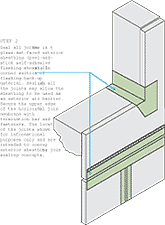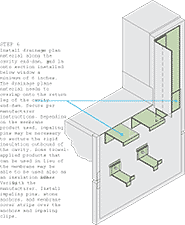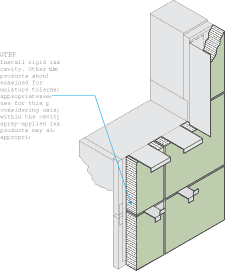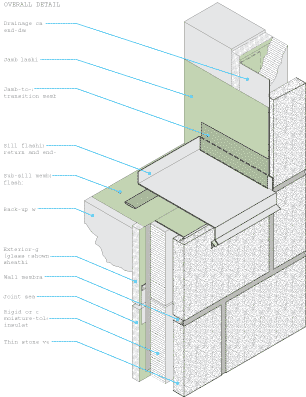High-Performing Envelopes Demand Know-How
Design and construction guidelines
The Building Envelope Design Guide is being produced by NIBS to provide comprehensive guidance on the design and construction of high-quality, long-lasting enclosures for offices and other public buildings, such as courthouses and hospitals, under the purview of six federal agencies: the Army Corps of Engineers, the Naval Facilities Engineering Command (NAVFAC), the Air Force, the General Services Administration (GSA), the Department of Energy, and the Federal Emergency Management Agency. It is the first time ever that a group of federal agencies have joined forces to develop and rely on a single set of design and construction guidelines. Although intended to improve the performance of building envelopes within the public sector, the guide promises to be a great resource for architects and building owners within the private sector as well.
|
|||||
The guide will be a Web-based rather than hard-copy document so that it can be more easily accessed and searched by users and expanded and updated on an ongoing basis by NIBS. It will be one of a series of guides posted on a relatively new Web site called the Whole Building Design Guide (www.wbdg.org), which is provided by NIBS, with support from the NAVFAC Criteria Office, GSA, the Department of Energy's National Renewable Energy Laboratory, and the Sustainable Buildings Industry Council, to facilitate the dissemination of regulatory and technical information to the building community. The first version of the Whole Building Design Guide will be available, free of charge, on the WBDG Web site later this year.
|
The new guide builds upon an earlier one, called Envelope Design Guidelines for Federal Office Buildings: Thermal Integrity and Airtightness, which was developed for GSA by Andrew K. Persily of the National Institute of Standards and published in 1994. "The earlier guidelines are being rounded out, filled in, and updated," explains Wagdy Anis, AIA, director of technical resources at Shepley Bulfinch Richardson and Abbott, in Boston, and chair of the Building Environment and Thermal Envelope Council (BETEC), a long-standing NIBS committee whose mission is to encourage optimum energy use of buildings through a better understanding of how overall, complex building components interact with each other and with the environment.
|
The new guide consists of an introduction plus five chapters on below-grade construction (including the basement walls, foundation, and floor slab that divide the interior from the exterior environment); structural and nonstructural exterior walls; low- and steep-slope roofing; fenestration (windows and curtain walls); and atria. Discussions of each system will include a basic description; fundamental principles of design; appropriateness of applications in terms of building function and climatic conditions; generic construction details in CAD format with extensive explanatory notes; a survey of significant current research and development; a summary of applicable codes and standards; and additional resources.
Each system will be examined in terms of material durability, maintenance, thermal performance, moisture protection, fire safety, acoustics, and-in the case of fenestration and atria-daylighting and visual qualities. In addition, the connections between any nonstructural components of the enclosure and the building structure will be addressed.
An accompanying series of papers will discuss sustainability; indoor air quality and mold prevention; HVAC integration; and the following safety issues: extreme wind; seismic activity; flood; blast attacks; and chemical, biological, and radiation (CBR) attacks.













